Amazon FBA Online Arbitrage – Case Study: 21% ROI
This case study demonstrates how to find a profitable product online for sale on Amazon using FBA, a process often referred to as Amazon online arbitrage. We will examine a product sold online in the EU, intending to sell it on the Amazon.co.uk marketplace with FBA service. This method is applicable across all Amazon marketplaces, although product sale prices can vary significantly.
How to Find Profitable Products to Sell on Amazon?
Finding profitable products is not easy and it’s time-consuming. There are many online paid tool which can hepl but still you will have to go through many online stores and check products one by one. The competition is big.
From my experience a good strategy is to search for discontinued products no longer in production. These products are usually not being sold by Amazon anymore and number of other sellers decreases over time, potentially increasing the selling price. And that’s what we are looking for.
In this study we will focus on Lego, which typically have a lifetime of 2-3 years, sometimes longer, depending on the theme. The optimal time to sell these sets on Amazon is just after they are retired. You can see directly on Lego.com if the set is retired or not.
Note: You need an approval from Amazon to sell Lego.
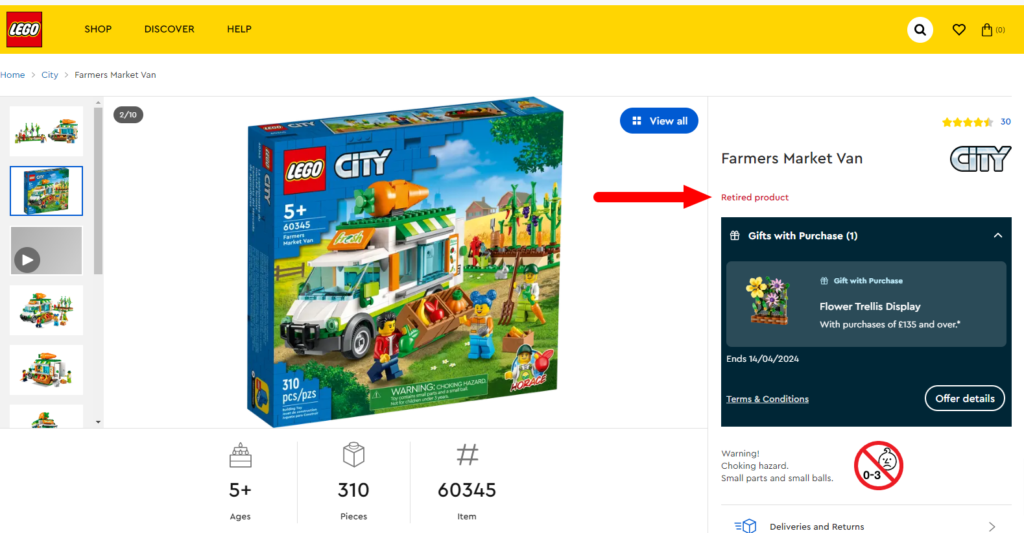
Finding Profitable Lego Set
Finding a profitable Lego set for Amazon online arbitrage takes some effort and time. You need to go through your local online stores and check the sets one by one if they are retired. I found a set 60345 on Bricklink – NickThaBrick store. This store is located in Belgium and has 105 pcs in stock for €29.44 each.
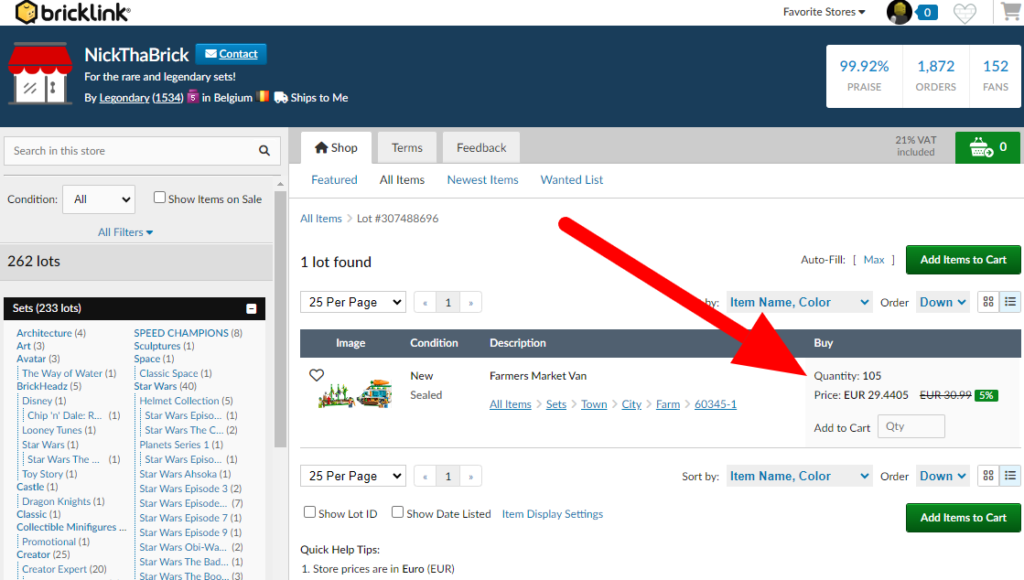
When the set is retired go to the Amazon and search for the set number – In our case Lego 60345. Sometimes the listings are duplicated so click on the first one.
Analyzing the Amazon Listing
Now we need to check if the set is selling, for what price and how many sellers are on the listing. Based on this data we will calculate if the product is profitable.
1. Best Sellers Rank, Offers, and Price History
The first data I look at is BSR history. By seeing the BSR history chart we can estimate how well the product is selling.
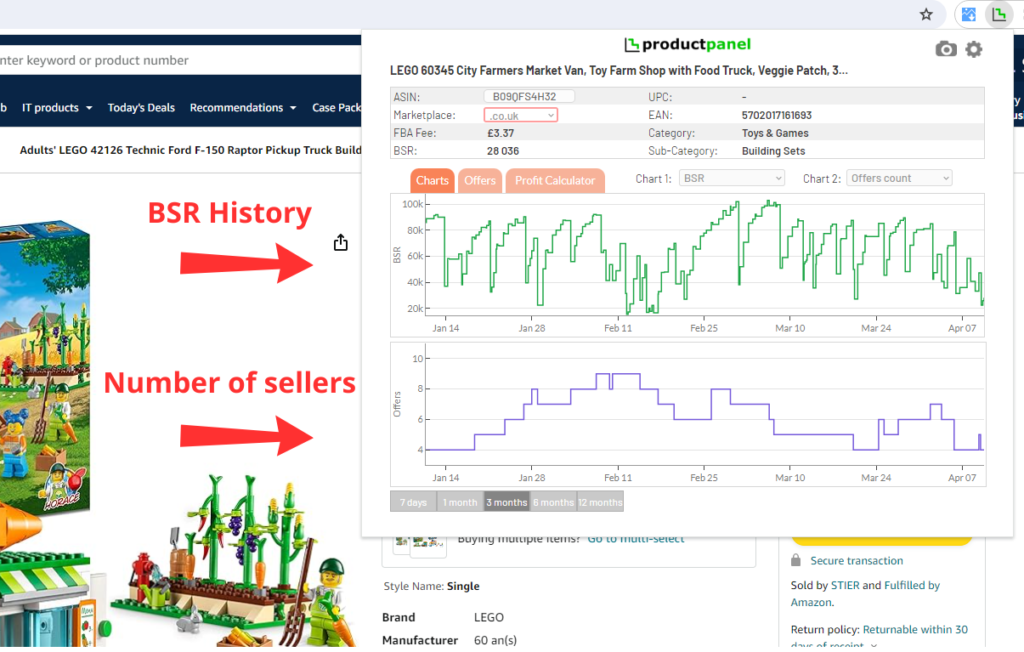
Based on the BSR history chart we can see the set is selling around 5-10 pcs a month over the last 3 months and the sales are stable which looks good (each drop in the chart represents a sale). Also the number of offers looks good – it moves between 4 – 9 sellers which is a very low number.
When the set is retired it is unlikely Amazon will sell the product themselves. But we can check to make sure. We can see the last time Amazon was selling the item was on 15th July 2023. Also we can see the buybox price has been around £42 over the last 3 months.
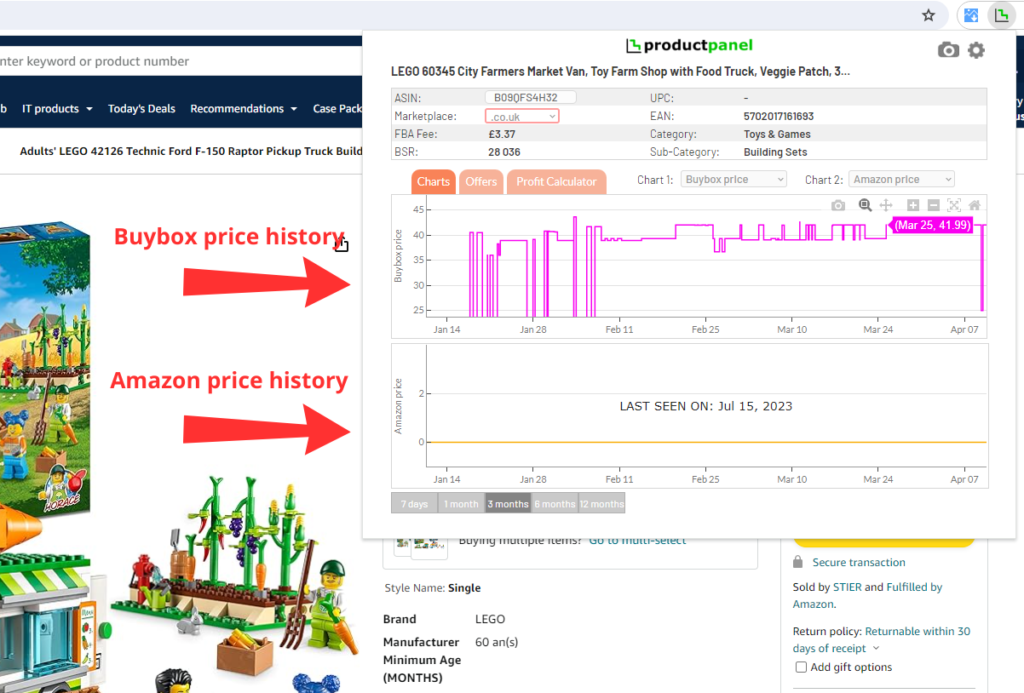
2. Competitors Check
Now it’s time to check competitors – live offers on the listing. Basically we want to see all sellers offering the product, their ratings, stock counts and fulfillment method – FBA or FBM.
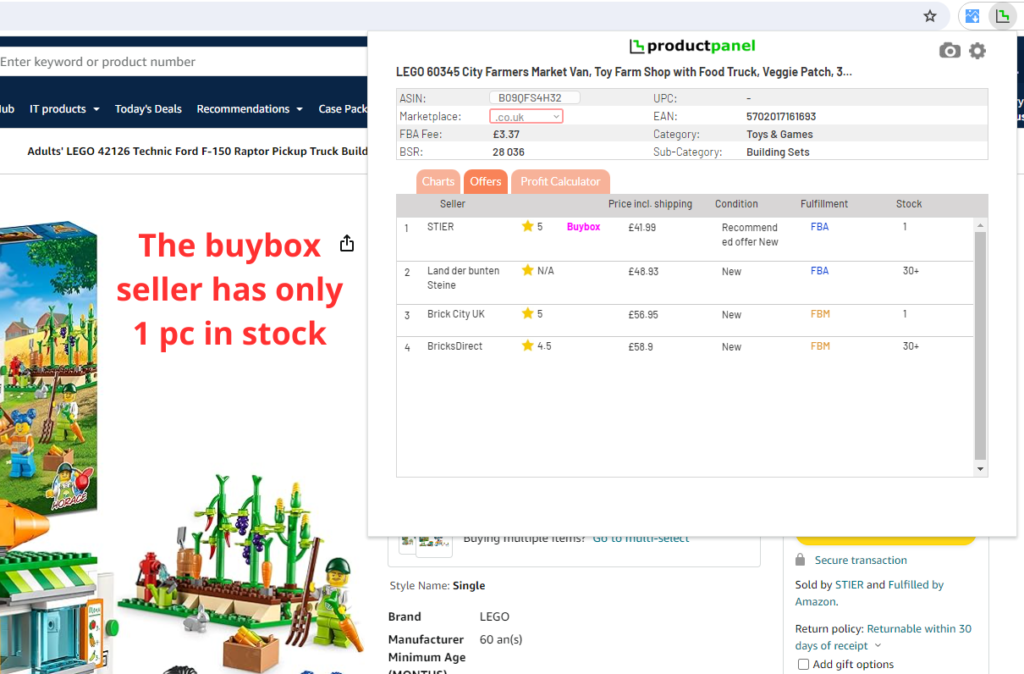
There are only 4 sellers offering the product. Furthermore the buybox seller has only 1 piece in stock. He will most likely sell out shortly and the lowest price will jump to £48.93 which is the price we can sell the product for.
3. Calculating profit and ROI
So far everything has looked good so we can go on to calculate if the product is profitable. The cost price of the set is €29.44. Now we have to add additional costs like shipping and duty – only in this case as the set will be shipped from EU to the UK. I will calculate with €3 per piece which includes shipping to me from the Bricklink store and shipping to the UK. The duty for Lego is 4% which is additional €1.2. Total cost is: 29.44 + 3 + 1.2 = €33.64 including VAT.
When calculating profits we have to consider our tax status and residence, where we buy products from and which marketplace we sell on. It will be quite different for US seller buying in the US and selling on Amazon.com. For this case we have to calculate with VAT.
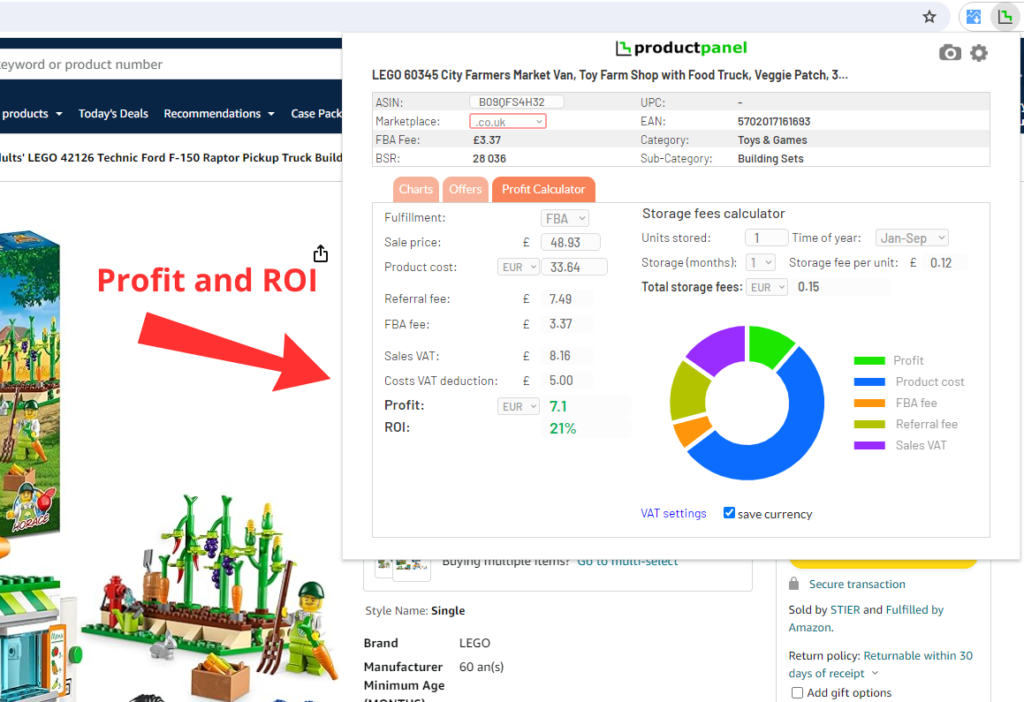
Final profit is €7.1 and 21% ROI which isn’t bad for Amazon online arbitrage.
Conclusion
This case study provided an example of finding a profitable product for Amazon online arbitrage. Because many sellers are buying and selling internationally I showed a product bought in Belgium and sold in the United Kingdom. Online arbitrage can still be profitable model to make money on Amazon but I would suggest to find a product category, learn it’s specifics and stick with it like I showed here with Lego example. Doing that you can make the process more effective and save time during the sourcing.
